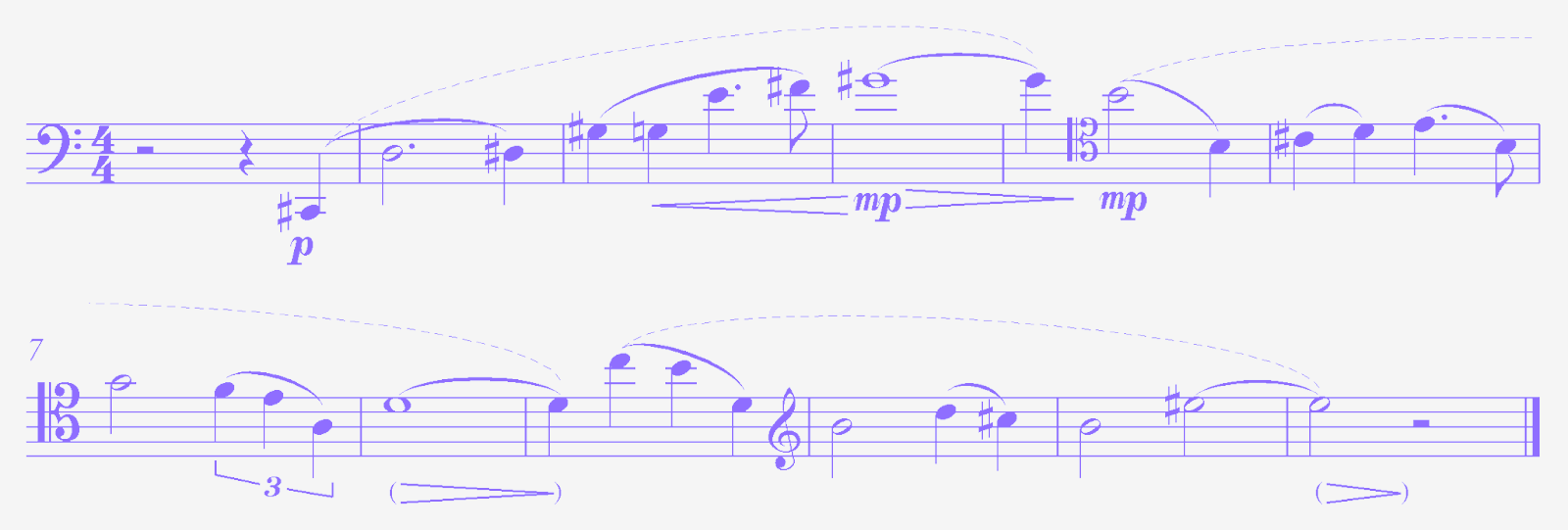WHY YOU SHOULD LEARN THIS PIECE
Three Poems by Benjamin Frankel
When I first started to write this column, my intention was to bring light to the massive catalogue of solo cello works that don’t receive enough attention. Many of these pieces I came across some time ago during my university years. Others are the results of recent collaborations with composers. This piece, however, I came across recently while researching serial music in film. Benjamin Frankel is usually credited as being the first composer to write serial and/or twelve-tone music for film scores; his most famous example of this is the Curse of the Werewolf. When I come across new composers I very often check to see if they have any repertoire that includes the cello. I find that playing a composer’s music is by far the best way to learn about their compositional style. It allows a much deeper understanding than simply studying their scores. I was overjoyed to find that Benjamin Frankel has written no less than three pieces for cello and piano.
The first two of these three poems are some of the most absolutely beautiful music I have come across. Poem One, marked grave, is a cello melody with sparse chordal piano accompaniment that spans the entire range of the instrument. One of the most challenging aspects of this movement is preserving a sense of phrase at this very slow tempo. What makes this even harder is that the piano often doesn’t provide any kind of motoric pulse, so it is largely up to the cellist to shape and mould the various melodic lines. If you look at the melody excerpt below, I have marked in (with a dashed slur) the phrasing that I choose to implement. Certainly, other choices are possible; this is what makes playing this kind of music so fun.

Poem Two is again a gorgeous melody for cello, but this time there is a bit more interaction with the pianist’s part. If you observe the time signature, Frankel has written the piece in 3/2 with the tempo marking tranquillamente. Even though the tempo should be quite slow, we have to preserve the feeling of three beats per measure and not let the pulse settle into a six beat subdivided bar, lest it become too weighted and overly burdened. If you look at the graphic below, you’ll see two rhythms that prevail throughout the piece: the quaver/dotted crochet rhythm, and the semiquaver/double-dotted crochet rhythm. Not only do these rhythms need to be accurately differentiated, but the semiquaver/double dotted crochet rhythm has to be executed without accent or too much emphasis that it disrupts the line.

Finally, this brings us to the fiery third poem. If we follow the composer’s tempo instructions, each of the poems should be faster than the preceding poem. I took the last of the three poems at approximately minum = 85. This third poem is definitely the most difficult of the three, mostly because of the faster tempo. If you can play it at a fast enough tempo, you’ll be able to maintain the syncopations and provide a fun and moving listening experience. I can’t help but be reminded of some similar lines in the Shostakovich second cello concerto.
